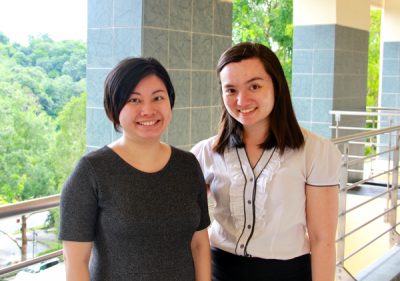Why Singapore’s English Teachers Should Embrace Singlish, Not Fight It
Is it time for Singaporean educators to embrace Singlish as a legitimate learning tool? What the Research […]
Read More
To promote deeper learning and nurture self-directed learners in the classroom, Teck Ghee Primary School found it necessary to redesign their approach to science. They share the process undertaken as they shifted towards inquiry-based learning where pupils are empowered to take greater ownership of their learning.

Science teachers Chaw Tee and Alia find that inquiry is effective in getting students to ask questions and develop an interest in science beyond examinations.
In inquiry-based learning, pupils are given questions and work individually or collaboratively to explain scientific concepts, using evidence to support their thoughts and claims. The process of inquiry is facilitated by teachers who help pupils make connections and build their understanding of concepts.
“When we ask ourselves, ‘What are we learning?’ this is done in the spirit of inquiry,” says Science teacher Ms Alia Alkaff. As curiosity and exploration are at the heart of inquiry, the school hopes to ignite the curiosity of pupils and motivate them to discover for themselves.
To inculcate a spirit of inquiry in learners, it employs two conceptual models – experiential learning and culture of thinking.
Experiential learning inspires curiosity and empowers pupils to take charge of their learning by showing them how science relates to real life. By designing lessons to be authentic, student learning can extend beyond the classroom.
“We create meaningful learning experiences by getting pupils to pull out a sweet potato plant and infer the function of its roots based on observation,” Alia shares. Based on pupils’ initial observations, Alia then designs her science lessons to build on their understanding and address any misconceptions.
“During lessons, we ask them questions to encourage deeper thinking,” she says. “Getting pupils to write down any questions they may have also enhances their learning.” Alia’s pupils also conduct their own research before the classroom activity so they are able to provide better answers and improve their understanding of different plant parts through the lesson.
To complement experiential learning, Teck Ghee’s science classrooms also adopt a culture of thinking where sharing and discussion are encouraged among pupils.
“This culture of thinking is used to develop students’ thinking process,” Alia explains. The repeated process of having pupils use evidence to support their thoughts and claims instead of merely memorizing keywords and answers immerses them in a “thinking culture” in the classroom.
With practice, pupils eventually acquire the skills to share their thoughts and views in the classroom without the fear of judgement, and monitor their own learning in the process.
“All of this is done in the spirit of inquiry while catering to the pupil’s learning needs,” Alia says. “We also share our classroom experiences with teachers from different levels to help them understand the intention of this project and think more critically about their own practice.”
Underpinning these two conceptual models is the belief that to foster learning and discussion in the classroom, pupils need to be active participants during lessons. “Teachers are not the gatekeepers or transmitters of information; they are facilitators in helping pupils make connections and build understanding,” shares Ms Neo Chaw Tee, also a Science teacher at Teck Ghee.
To engage her pupils, Chaw Tee created a learning artefact – a setup of four plants consisting of a complete plant, a plant with a damaged stem, a plant without leaves, and a plant with roots wrapped in a plastic bag. The plants were left in the classroom where pupils could observe them for a few days.
“In this teacher-designed task, students have to make sense of their observations and infer the functions of the plant parts,” explains Chaw Tee. Individually or in groups, pupils explore what they want to report, research for relevant information and support their claims through self-curated evidence.
“When pupils engage in inquiry from their own lenses, meaning-making becomes dynamic,” she says. As they articulate their findings, present their work and receive feedback, pupils are constantly refining their understanding of the subject.
Teachers help to connect, challenge, deepen and extend pupils’ thinking by probing or asking more questions. Through active questioning, Chaw Tee finds that pupils can be “led” (rather than simply instructed) to arrive at the answers to their own questions.
“When pupils engage in inquiry from their own lenses, meaning-making becomes dynamic.”
– Chaw Tee on how experience and exploration builds pupils’ knowledge
Teachers have also benefited from the school’s emphasis on innovation through inquiry.
“Our teachers have moved beyond being implementers to become designers of lesson experiences,” Chaw Tee says. For them to continue developing themselves professionally and transform their teaching practices in the classroom, a culture of experiential learning and thinking supported by school-based curricular innovation must be localized to pupils’ needs and teacher readiness.
For instance, when scaling up pedagogical innovations, teachers must consider both the hardware (types of tools to use in the classrooms) and heartware (pupil readiness and how much the teacher is willing to change the way lessons are delivered).
Chaw Tee describes this process of innovation to promote stronger inquiry and self-directed learning as itself a live artifact – constantly growing and evolving.
“Without the active role of students, teachers and school leaders in contributing to the development of the curriculum and creating a safe and supportive environment for
learning, this journey would not have been possible,” she says.